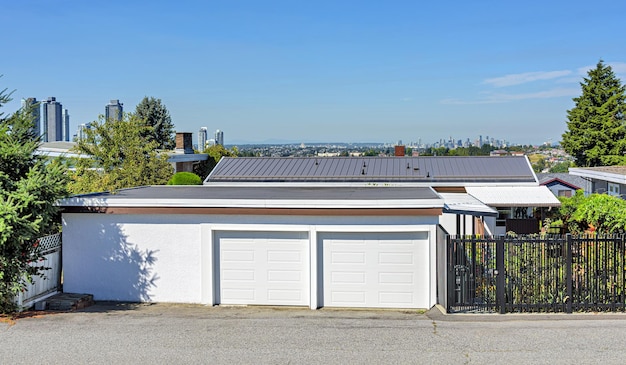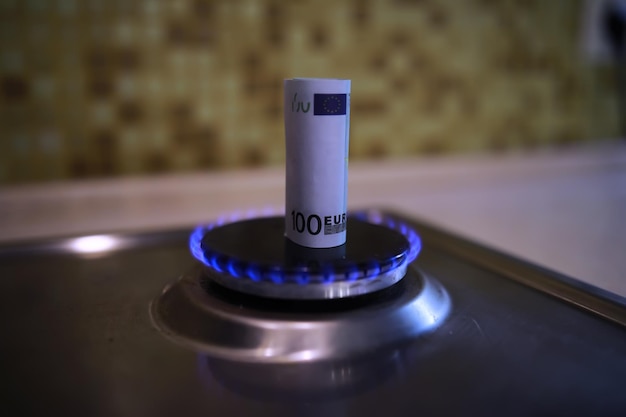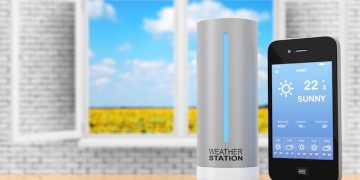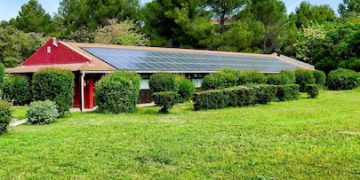Maximize Savings: Energy-Efficient Home Improvement Tax Credits for 2025

In 2025, US homeowners can claim up to $7,500 in tax credits for making qualified energy-efficient improvements to their homes, helping them reduce energy consumption and save money while also benefiting the environment through upgraded, eco-friendly appliances and systems.
Are you planning some home improvements? The 2025 tax season might bring some welcome relief to your wallet. With updated legislation, you could claim up to $7,500 in tax credits for energy-efficient home improvements. Let’s delve into the details of these credits and how you can take advantage of them.
Understanding the Energy Efficiency Tax Credits
Energy efficiency tax credits are incentives offered by the government to encourage homeowners to invest in energy-saving upgrades. These credits can significantly reduce the upfront costs of installing new, efficient equipment and making improvements that lower your home’s energy consumption.
These credits have been updated and extended to provide more substantial benefits. Knowing the specifics of these credits is crucial to making informed decisions about your home and leveraging the potential savings.
Types of Energy Efficiency Tax Credits
There are primarily two types of energy efficiency tax credits available:
- Residential Clean Energy Credit: Covers renewable energy sources like solar, wind, and geothermal.
- Energy Efficiency Home Improvement Credit: Focuses on improvements to your home’s envelope and the installation of energy-efficient equipment.
Each credit has its own set of rules and limitations, so it’s essential to understand which improvements qualify under which credit.
In summary, energy efficiency tax credits are valuable tools that can help homeowners save money and reduce their environmental footprint by investing in qualifying home upgrades.

Key Changes for 2025
Several updates have been made to the energy efficiency tax credits for 2025, making them more accessible and beneficial for homeowners. These changes aim to incentivize further investment in energy-efficient upgrades, aligning with broader environmental goals.
The updated credits provide increased financial relief and broader eligibility criteria, encouraging more homeowners to participate.
Increased Credit Amounts
One of the most notable changes is the increase in the maximum credit amount. Homeowners can now claim up to $7,500 for qualified energy-efficient improvements, a substantial increase from previous years.
This higher credit amount makes more significant improvements, such as solar panel installations and comprehensive insulation upgrades, more financially feasible.
Expanded Eligibility
The eligibility criteria for these credits have also been expanded. More types of energy-efficient equipment and home improvements now qualify, offering homeowners a wider range of options.
- Heat Pumps: More efficient models are now eligible.
- Insulation: Upgrades to insulation in attics, walls, and floors can qualify.
- Energy-Efficient Windows and Doors: Improvements that meet specific energy efficiency standards now qualify.
These expanded criteria mean that more homeowners can take advantage of the tax credits, making energy-efficient upgrades more accessible.
In conclusion, the key changes for 2025 include higher credit amounts and expanded eligibility, making it more attractive and accessible for homeowners to invest in energy-efficient home improvements.
Eligible Home Improvements and Equipment
Understanding which home improvements and equipment qualify for the energy efficiency tax credits is crucial for maximizing your savings. There’s a wide range of upgrades that can make your home more energy-efficient and eligible for these credits.
By identifying and investing in these eligible improvements, homeowners can not only reduce their energy bills but also benefit from significant tax savings.
Qualifying Home Improvements
Several home improvements qualify for the energy efficiency tax credits. These include:
- Insulation: Upgrading insulation in your attic, walls, and floors can significantly reduce heat loss and gain, lowering your energy consumption.
- Energy-Efficient Windows and Doors: Replacing old, inefficient windows and doors with ENERGY STAR-certified models can reduce drafts and improve your home’s thermal performance.
- Air Sealing: Sealing gaps and cracks in your home’s envelope can prevent air leaks, making your heating and cooling systems more efficient.
Eligible Equipment
In addition to home improvements, certain types of energy-efficient equipment also qualify for the tax credits. These include:
- Heat Pumps: Installing a high-efficiency heat pump can provide both heating and cooling while using significantly less energy than traditional systems.
- Water Heaters: Upgrading to an energy-efficient water heater can reduce your water heating costs and qualify for a tax credit.
- HVAC Systems: Replacing old, inefficient HVAC systems with ENERGY STAR-certified models ensures optimal energy performance.
Choosing the right combination of eligible home improvements and equipment can help you maximize your energy savings and tax credits.
To summarize, a variety of home improvements and equipment upgrades qualify for the energy efficiency tax credits, providing opportunities for homeowners to save money and reduce their energy consumption.

How to Claim the Tax Credits
Claiming the energy efficiency tax credits involves several steps, from gathering the necessary documentation to filling out the required tax forms. Following these steps carefully will ensure that you receive the credits you’re entitled to.
Homeowners must keep accurate records and understand the filing process to successfully claim these valuable tax credits.
Gathering Documentation
Before you can claim the tax credits, you’ll need to gather all the necessary documentation. This includes:
- Receipts: Keep detailed receipts for all eligible purchases and installations.
- Manufacturer Certifications: Obtain certifications from the manufacturers of the energy-efficient equipment, verifying that the products meet the required standards.
- Energy Audits: If you’ve had an energy audit conducted on your home, keep a copy of the report to support your claim.
Filing the Tax Forms
To claim the energy efficiency tax credits, you’ll need to fill out specific tax forms. Typically, this involves:
- Form 5695: Residential Energy Credits. This form is used to claim both the Residential Clean Energy Credit and the Energy Efficiency Home Improvement Credit.
Make sure to fill out the forms accurately and attach all the required documentation to avoid delays or denials.
Consulting a Tax Professional
If you’re unsure about any part of the claiming process, consider consulting a tax professional. A qualified tax advisor can provide personalized guidance and ensure that you’re taking full advantage of the available credits.
In conclusion, claiming the energy efficiency tax credits requires careful documentation and accurate filing of tax forms, and consulting a tax professional can provide valuable assistance.
Tips for Maximizing Your Tax Credit
To make the most of the energy efficiency tax credits, there are several strategies you can employ. Planning your upgrades strategically and keeping thorough records can significantly increase your savings.
By following these tips, homeowners can ensure they’re maximizing their tax credit benefits and making the most of their energy-efficient investments.
Plan Strategically
Planning your home improvements and equipment upgrades strategically can help you maximize your tax credits. Consider the following:
- Prioritize High-Impact Improvements: Focus on upgrades that will have the biggest impact on your home’s energy efficiency, such as insulation and HVAC systems.
- Bundle Upgrades: Combining multiple upgrades in a single year can help you reach the maximum credit amount.
- Consider Long-Term Benefits: Choose improvements that will not only qualify for tax credits but also provide long-term energy savings.
Keep Detailed Records
Maintaining detailed records is essential for claiming the tax credits. Make sure to keep:
- Receipts: Save all receipts for eligible purchases and installations.
- Certifications: Obtain and store manufacturer certifications for energy-efficient equipment.
- Energy Audit Reports: Keep copies of any energy audit reports conducted on your home.
Stay Informed
Stay up-to-date on the latest changes to the energy efficiency tax credits. Tax laws and regulations can change, so it’s important to stay informed to ensure you’re taking full advantage of the available benefits.
To summarize, maximizing your tax credit involves strategic planning, detailed record-keeping, and staying informed about the latest changes to the tax laws.
Potential Savings and Environmental Impact
Investing in energy-efficient home improvements not only benefits your wallet but also has a positive impact on the environment. The combination of tax credits and long-term energy savings makes these upgrades a win-win for homeowners and the planet.
Understanding the potential savings and environmental impact can help homeowners make informed decisions and contribute to a more sustainable future.
Financial Benefits
The financial benefits of energy-efficient home improvements are substantial. These include:
- Tax Credits: As discussed, these can significantly reduce the upfront costs of upgrades.
- Lower Energy Bills: Energy-efficient improvements reduce your home’s energy consumption, resulting in lower monthly energy bills.
- Increased Home Value: Homes with energy-efficient features often have higher resale values.
Environmental Benefits
The environmental benefits of energy-efficient home improvements are equally significant. These include:
- Reduced Carbon Footprint: Lower energy consumption means less reliance on fossil fuels, reducing your carbon footprint.
- Conservation of Resources: Using less energy helps conserve natural resources and reduce pollution.
- Improved Air Quality: Reducing energy consumption can help improve air quality by decreasing emissions from power plants.
By investing in energy-efficient upgrades, homeowners can save money, reduce their environmental impact, and contribute to a more sustainable future.
In conclusion, energy-efficient home improvements offer significant financial and environmental benefits, making them a worthwhile investment for homeowners who want to save money and protect the planet.
| Key Point | Brief Description |
|---|---|
| 💰 Tax Credit Amount | Homeowners can claim up to $7,500 for qualifying improvements. |
| ✅ Eligible Improvements | Insulation, energy-efficient windows/doors, heat pumps, and HVAC systems. |
| 📝 Required Forms | Use Form 5695 to claim residential energy credits. |
| 🌍 Environmental Impact | Reduces carbon footprint and conserves natural resources. |
Frequently Asked Questions
▼
Qualifying improvements include insulation upgrades, energy-efficient windows and doors, heat pumps, water heaters, and HVAC systems that meet specific energy efficiency standards.
▼
Homeowners can claim up to $7,500 in tax credits for qualified energy-efficient home improvements made in 2025, providing significant financial relief.
▼
To claim the energy efficiency tax credits, you will need to fill out Form 5695, which is used for Residential Energy Credits. Ensure all documentation is attached.
▼
Yes, the Residential Clean Energy Credit covers renewable energy sources like solar, wind, and geothermal, providing additional incentives for eco-friendly installations.
▼
You can find more information on eligible products at the ENERGY STAR website and by consulting with qualified contractors who are familiar with the latest energy efficiency standards.
Conclusion
Taking advantage of the updated energy efficiency tax credits can significantly reduce the cost of making your home more energy-efficient. By understanding the eligibility criteria, claiming process, and potential savings, you can make informed decisions that benefit both your wallet and the environment. Start planning your upgrades today to maximize your tax credit in 2025!





